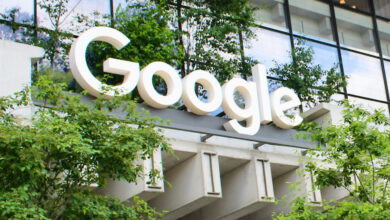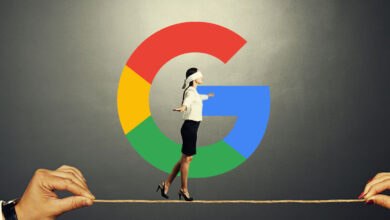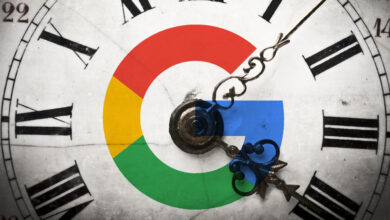Breaking Into New Markets With PPC: Key Considerations
Google Ads dominates the global PPC market with advertising revenue surpassing $265 billion in 2024.
Paid search is self-serving and fast to deploy. But as simple as it appears, the reality is much more complex.
The perceived ease of activation paints a picture that this channel is a silver bullet when brands look to enter new markets.
It’s as easy as piecing together an automated campaign such as Performance Max, changing the target location, and letting Google do the hard work, isn’t it?
This couldn’t be further from the truth, and from managing Paid Search for over 15 years, I can vouch for this firsthand.
PPC can play a key role in market expansion, but it’s not a market entry strategy, which it can often get confused with.
This post explores how paid search fits into a go-to-market strategy and what brands need to consider when launching in a new market, from media modeling to localization, brand building, and more.
Full-Funnel Media Planning Is Essential
Roughly speaking, paid search can be deployed in a new market within a short time frame.
Brand can liaise with in-house teams/PPC agencies, start the ball rolling, and then activate campaigns in a new locale in a fraction of the time it would take to even begin planning a full-funnel strategy.
For example, say you’re a U.S.-based ecommerce brand that sells luxury skincare and wants to break into the UK, without any brand demand in this market.
You build out Google Ads search and shopping campaigns and enter auctions for a wealth of generic queries, such as:
You’ll drive traffic to the site for relevant queries and might start to build momentum with sales. However, if the campaigns were to be paused, so would the entire presence of your brand in this market.
With full-funnel media buying, brands look at the full customer journey, of which different brands have a different mix of budgeting across each stage (lower, middle, and upper funnel, for example).
McKinsey defines full-funnel marketing as “an approach that combines the power of both brand building and performance marketing through linked teams, measurement systems, and key performance indicators (KPIs).”
Outside of the context of launching into a new market, this approach to media buying is essential, and PPC sits within the mix of lower, middle, and upper funnel advertising strategies.
The split of the budget across the funnel will vary by brand. Les Binet and Peter Field argue that the most effective strategies adopt a 60/40 split of long-term brand building and short-term activation.
When you’re launching into a new market, the split could look a whole lot different as you’ll need to build brand awareness from scratch. Over time, it will move the needle over to performance-based campaigns as part of a wider media mix.
Have A Robust Measurement Strategy In Place
Take the example of a U.S.-based luxury skincare brand expanding into the UK.
After the initial test period, simply looking at PPC performance through engagement or sales metrics isn’t enough to determine whether the expansion succeeded.
PPC campaigns influence more than just immediate clicks and conversions.
Depending on the strategy, they can contribute to brand awareness, drive offline actions, and more.
For instance, a search ad might not result in an immediate online purchase but could lead a customer to visit a physical store or make a purchase at a later time. When the only presence in a new market is via paid search, conversion rates could be considerably lower than those in established markets.
Taking this into account, a brand can’t expect to answer “how did the market expansion go?” based on a narrow sample of data from one channel, especially when that channel isn’t part of a broader go-to-market media strategy.
It’s crucial to measure PPC’s impact beyond platform-specific metrics, and incorporating a holistic approach to measurement is essential.
One tactic to use is Media Mix Modelling (MMM). This allows marketers to capture these indirect effects, ensuring a more accurate assessment of PPC’s role in the overall marketing strategy.
MMM is used by 53% of U.S. marketers, and 30% believe it is the best model for identifying drivers of business value as it doesn’t rely on user-level data, making it effective at viewing the impact of paid media on the bottom line.
If it’s a simple PPC activation or a full-funnel go-to-market media strategy, the importance of having a framework for measuring performance holistically is key, as this lays the groundwork for understanding the successes and failures when expanding into a new market.
Research Market-Specific Nuances And Adapt
When entering a new market, it’s not just your media plan that needs to adapt; it’s also your understanding of the consumer.
Even in an increasingly connected world, buying behaviors remain deeply influenced by local culture, habits, and expectations.
Studies have shown that organizations with high cultural intelligence see a 30% increase in their market penetration compared to their competitors.
Brands must consider:
Cultural Differences
Nearly 75% of UK shoppers say their purchasing is influenced by local culture, yet 75% of consumers in India feel that global brands offer better quality products compared to the local market.
Understanding what problems users prioritize, what features matter, and how consumers approach purchases is essential when piecing together a PPC plan and the backbone for a full go-to-market strategy.
A one-size-fits-all approach won’t cut it, and even though there may be search demand for the products/services you sell, this doesn’t mean you can simply activate and watch the sales roll in (in most cases).
This is both a strategic and tactical consideration, from the first day of planning which markets you are going to target, to the types of phrases used within your ad copy.
Longer Consideration And Research
One-third of consumers globally spend more time researching purchase decisions online than ever before.
When you layer in the nuances of a brand entering a new market, the need for a robust go-to-market strategy vs. a simple activation on PPC is crucial.
With the consideration process being longer than ever, brands need to understand and adapt to market-specific purchasing behavior, and this should run through everything involved within digital.
From the messaging used in ads to forecasting out purchase paths, to then determine when an expected return on ad spend can be accurately reported.
Local Digital Ecosystems
Digital behavior differs massively between markets. Assuming that one country will respond the same to your PPC campaigns as another is short-sighted.
Take China, for example. Google and Meta are blocked, and brands will have to look for alternative routes for activating PPC, such as Baidu.
Running search ads follows a similar blueprint, but the research, planning, build, etc., will require a bespoke approach.
Another consideration is payment methods.
India, for example, favors wallets like PayTM, while 15% of the entire Klarna market resides in Germany.
Context aside, these factors play a key role in building a thorough digital expansion plan, which incorporates PPC, as without these, brands will be scratching their heads to uncover why PPC metrics look a certain way.
The Key To Making PPC Work In New Markets Isn’t PPC
Launching PPC in a new market might seem straightforward. From a resource perspective and context aside, it doesn’t demand a great deal of time to get up and running.
This is where Google Ads shines, as brands can enter a new market with just a few clicks and begin driving traffic.
However, driving the traffic is part of the bigger picture with digital market expansion, and there’s a wealth of factors that need to be considered to give brands the best chance at success.
Factors such as:
- Delivery fees, tariffs, shipping timelines.
- Localized assets, website, currency.
- Contact preferences, customer service, localized support.
- Pricing and returns policies.
- Trust signals, local reviews, social media presence.
These factors aren’t as easy to measure as PPC, but they are arguably more important than PPC itself.
A recent survey found that trust emerges as the most critical factor in purchasing decisions when consumers consider buying from a new brand.
Consumers place significant importance on elements such as star ratings, the number of reviews, and the credibility of those reviews.
PPC can (and will) exist in isolation for many brands, and even the most well-built, researched, and curated campaigns can fall short when activating in a new market.
To stand the best chance of success, brands must consider the full digital ecosystem, from how they apportion budget across the funnel, how they display shipping fees on their site, and how best to go about building trust signals from launch.
PPC can drive visibility and traffic, but it’s everything around it that matters most, and brands who consider and act on all of these factors are the ones who succeed.
More Resources:
Featured Image: insta_photos/Shutterstock




